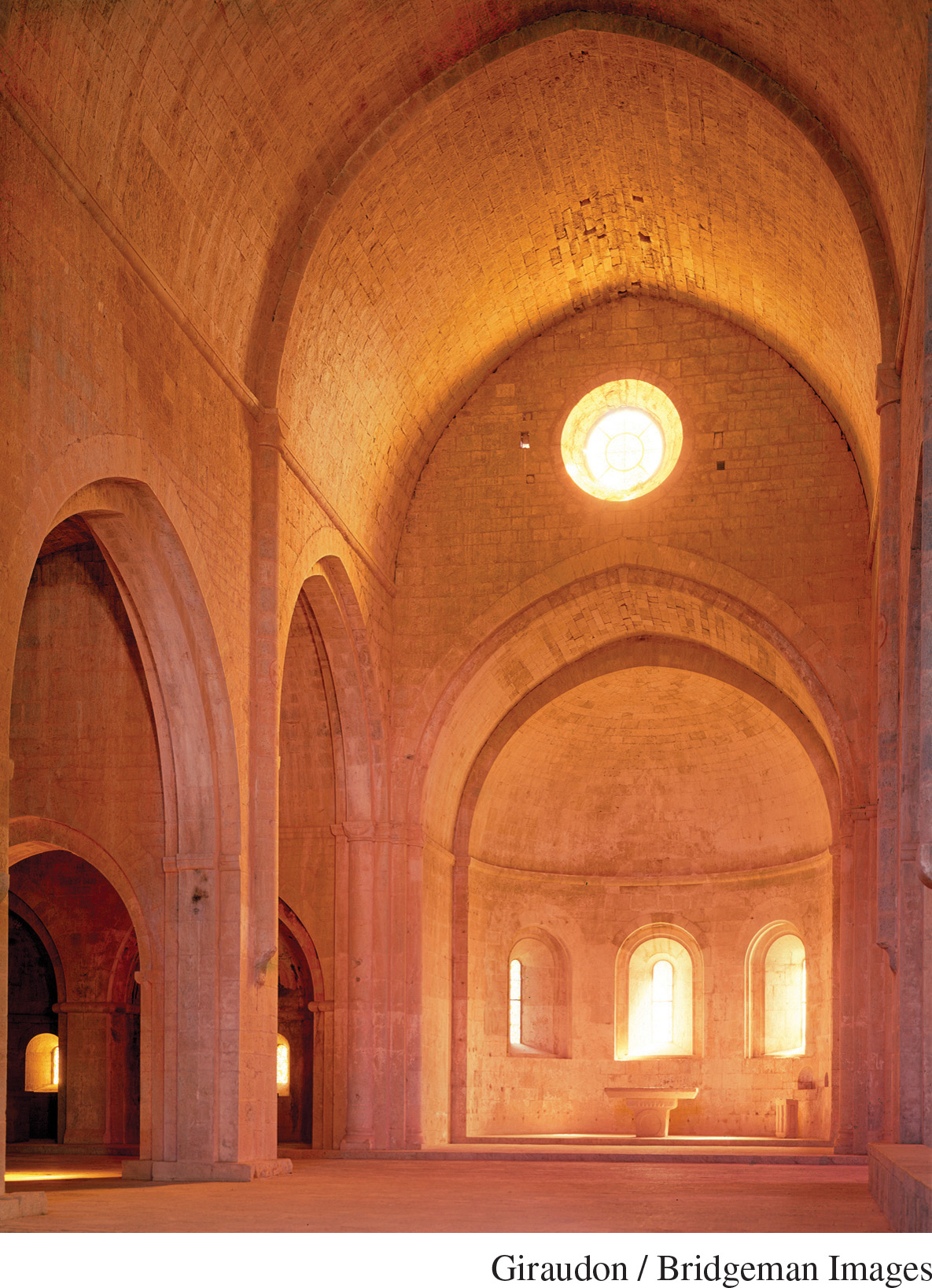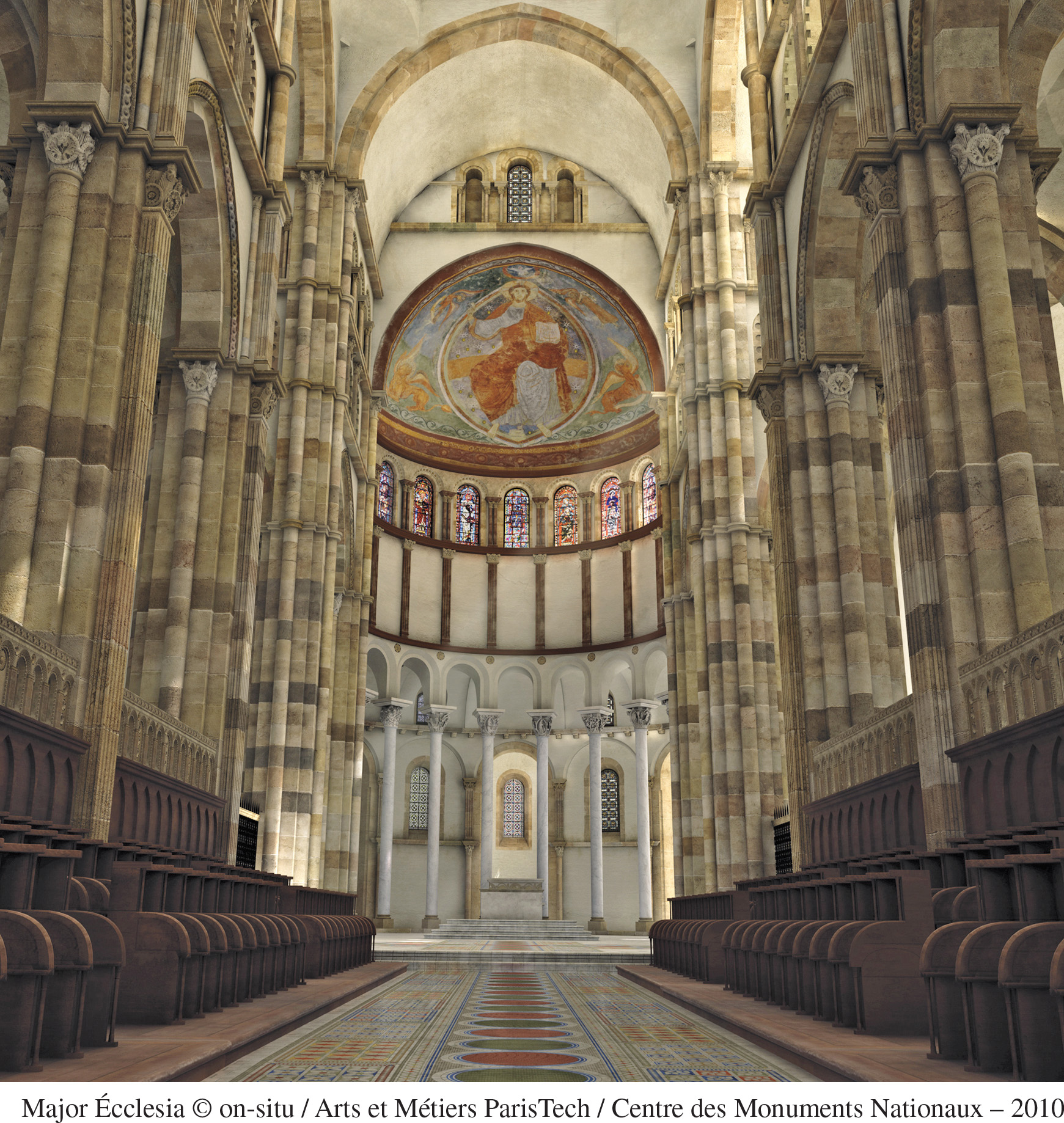Seeing History: Two Faces of Monasticism


With the commercial revolution, new forms of monasticism developed and to some degree competed with the old. The older kinds of monasteries followed the Benedictine Rule but also added numerous other customs and practices, such as singing two masses per day and adding many psalms to the regular daily liturgy. They prided themselves on their elaborate forms of worship carried out in large and splendid churches and using the finest plates, chalices, and other accouterments.
The image on the left is a computer-enhanced image of the most important of these grand-style monasteries: Cluny. In the twelfth century Cluny’s abbot Hugh (who appears with Matilda in this image) built the largest and most sumptuous church in all of Christendom. In its cavernous stone building, the sounds of the liturgy echoed throughout the day. At the top of the apse (the easternmost part of the church), an image of Christ painted in bright colors floated in a mandorla—a large almond-shaped aureole—surrounded by the symbols of the Evangelists (who wrote the four Gospels). Stained glass adorned the windows, and alternating light and dark stone enlivened the massive piers that reached from floor to vault.
The newer forms of monasticism, exemplified in the image on the right by the church at Le Thoronet, rejected all signs of luxury and grandeur. A Cistercian monastery founded in 1136, Le Thoronet pared down all the customs of the Cluniac houses, determined to get back to the pristine Benedictine form. It had only a small and plain church devoid of any wall paintings, ornaments, or sculpture. Nothing was to interfere with the contemplative inner lives of the monks worshipping there.
Question to Consider
How was the church at Le Thoronet an implicit criticism of Cluny’s church?